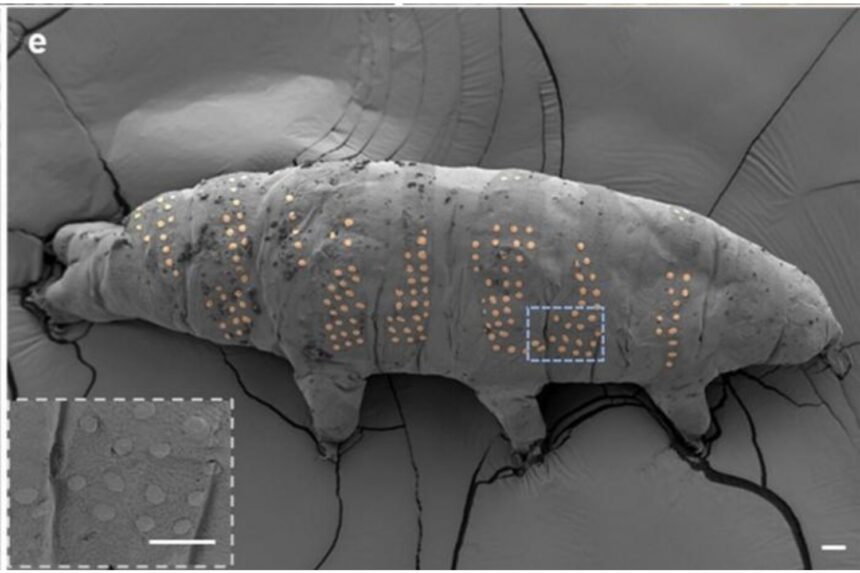Microfabrication is—simply put—the construction of tiny things, including microscopic and nanoscopic objects and patterns. Microfabrication has major potential in medicine and biomedical engineering, in addition to fields like electronics and photonics—but first, researchers need to develop techniques that are biologically compatible. One team of researchers thinks a crucial step toward that goal involves tattooing tardigrades.
In order to test the techniques necessary to build microscopic biocompatible devices, researchers in China have found a way to give tardigrades tattoos. If you think that’s wacky, just wait. Their approach, detailed in a study published at the end of March in the journal Nano Letters, could have important implications for the development of living microrobotics, such as microbial cyborgs.
In reality, tardigrades, also known as water bears, aren’t just “hardy” creatures. They’re eight-legged animals about 0.02 inches (0.5 millimeters) long, and are virtually indestructible. Their astonishing resistance to starvation, freezing temperatures, radiation, pressure, and the vacuum of space have, unsurprisingly, inspired scientists to investigate whether humans could learn a thing or two from them.
In the recent study, researchers dehydrated tardigrades to induce a cryptobiotic state—a sort of half-dead hibernation. They put the tardigrades onto surfaces cooled to below -226 degrees Fahrenheit (-143 degrees Celsius), and covered the tiny creatures in anisole, an anise-scented organic compound.
Using a focused electron beam, the researchers drew micropatterns on the tardigrades such as squares, lines, dots, and even a university logo. The frozen anisole layer exposed directly to the beam formed a new chemical compound that adhered to the tardigrade. The team then warmed the tardigrade to room temperature under a vacuum, and the frozen anisole that hadn’t reacted with the electron beam sublimated (turned into a gas), leaving behind only the pattern created by the new chemical—the tattoo. Then they rehydrated the tardigrades.
The good news is that the tattoos didn’t seem to impact the revived tardigrades. The bad news is that only around 40% of the tardigrades survived, but the researchers say this could improve with further refinement. Nevertheless, the study suggests that researchers could use this method to print microelectronics or sensors onto living tissue.
“This approach provides new insights into tardigrades’ resilience and has potential applications in cryopreservation, biomedicine, and astrobiology,” the researchers wrote in the study. Cryopreservation is the practice of conserving biological matter at very low temperatures. “Furthermore, integrating micro/nanofabrication techniques with living organisms could catalyze advancements in biosensing, biomimetics, and living microrobotics.” Biomimetics involves imitating nature’s processes in human creations.
Microrobots are tiny robots that can perform tasks inside an organism’s body, such as deliver medicine and monitor and treat diseases. As such, we can presume that living microrobots, such as microbial cyborgs, are hybrid robots that join synthetic technology and living cells to achieve more useful features.
“Through this technology, we’re not just creating micro-tattoos on tardigrades — we’re extending this capability to various living organisms, including bacteria,” Ding Zhao, co-author of the paper and a researcher at the Westlake Institute for Optoelectronics, said in an American Chemical Society statement.
“It is challenging to pattern living matter,” said Gavin King, a researcher at the University of Missouri’s Department of Physics and Astronomy who was not involved in the study. The statement credits King with inventing the technique used in the study, called ice lithography. “This advance portends a new generation of biomaterial devices and biophysical sensors that were previously only present in science fiction,” he concluded.
Read the full article here












